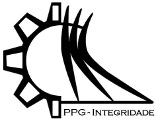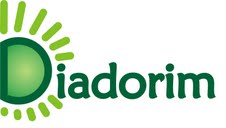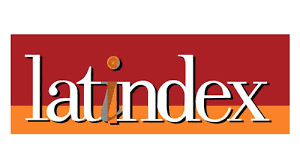USO DO MÉTODO HOMOGENEIZADO NA MODELAGEM DE VIGAS PAREDES DE CONCRETO ARMADO
DOI:
https://doi.org/10.26512/ripe.v2i18.20956Keywords:
Viga Parede. Método dos Elementos Finitos. Método Homogeneizado. Concreto Armado.Abstract
Esse trabalho apresenta simulações numéricas de vigas paredes de concreto armado utilizando o Método dos Elementos Finitos (MEF) onde é adotado o método homogeneizado ou “smeared” para discretização de estruturas de concreto armado. O método homogeneizado considera a armadura distribuída uniformemente no concreto, tal procedimento interpreta as regiões entre concreto e aço como um material novo com uma rigidez equivalente, tendo como principal vantagem o processo de discretização da malha, já que não se tem a preocupação de criar elementos distintos de concreto e aço. Os fenômenos como fissuração e seus efeitos na redistribuição de tensões no elemento e na aderência entre a armadura e o concreto são inseridos implicitamente nas relações constitutivas dos materiais. A implementação do método fará uso do “Modified Compression Field Theory” (MCFT) proposto por Vecchio e Collins, uma das teorias que adota o método homogeneizado e uma das que mais se destaca na literatura. Por fim são comparados os resultados obtidos pelos modelos numéricos com resultados experimentais.
References
BENTZ, E. C. Sectional Analysis of Reinforced Concrete Members. [s.l.] UNIVERSITY OF TORONTO, 2000.
COLLINS, M. P. TOWARDS A RATIONAL THEORY FOR RC MEMBERS IN SHEAR. JOURNAL OF THE STRUCTURAL DIVISION, ASCE, v. 104, 1978.
FISH, J.; BELYTSCHKO, T. A First Course in Finite Elements. [s.l.] John Wiley e Sons, Ltd, 2007.
FOSTER, S. J.; MARTI, P.; ASCE, F. Cracked Membrane Model : Finite Element Implementation. v. 129, n. September, p. 1155”“1163, 2003.
GUPTA, A. M e m b r a n e reinforcement in concrete shells: a review. NUCLEAR ENGINEERING AND DESIGN, v. 82, 1984.
GUPTA, A. K.; ASCE, M. COMBINED MEMBRANE AND FLEXURAL REINFORCEMENT IN PLATES AND SHELLS. Journal of Structural Engineering, v. 112, n. 3, p. 550”“557, 1986.
KONG, F. et al. Reinforced concrete deep beams. [s.l.] Faculty of Engineering, Alexandria University, 2002. v. 114
KWAK, H.-G.; FILIPPOU, F. C. Finite Element Analysis of Reinforced Concrete Structures Finite Element Analysis of Reinforced Concrete Structures. Matrix, v. 14, n. November, p. 717”“725, 1990.
LEONHARDT, F.; WALTHER, R. DEEP BEAMS. BULLETIN 178, DEUTSCHER AUSSCHUSS FUR STAHLBETON, BERLIN, 1966.
MITCHELL, D.; COLLINS, M. P. DIAGONAL COMPRESSION FIELD THEORY. JOURNAL, ACI, v. 71, p. 396”“408, 1974.
ROTS, J. G.; BLAAUWENDRAAD, J. Crack models for concrete: discrete or smeared? Fixed multi-directional or rotatin? Heron, v. 34, n. 1, p. 3”“59, 1989.
SELBY, R. G.; VECCHIO, F. J. A constitutive model for analysis of reinforced concrete solids. Canadian Journal of Civil Engineering, v. 24, n. 3, p. 460”“470, 1997.
SHIN, H. M. FINITE ELEMENT ANALYSIS OF REINFORCED CONCRETE MEMBERS SUBJECTED TO REVERSED CYCLIC IN-PLANE LOADING. [s.l.] TOKYO UNIVERSITY, 1988.
SOUZA, R. A. DE. Desenvolvimento de uma ferramenta computacional para a an??lise de elementos de membrana em concreto estrutural. Revista Internacional de Metodos Numericos para Calculo y Diseno en Ingenieria, v. 29, n. 1, p. 38”“51, 2013.
VECCHIO, F. J., AND COLLINS, M. P. The modified compression-filed theory for reinforced concrete elements subjected to shear. Journal Proceedings, ACI, v. 83, n. 2, p. 219”“231, 1986.
VECCHIO, B. F. J. Reinforced concrete membrane element formulations. v. 116, n. 3, p. 730”“750, 1990.
VECCHIO, F. J. Nonlinear Finite Element Analysis of Reinforced Concrete Columns. Journal of the Korea Concrete Institute, v. 16, n. 3, p. 397”“406, 1989.
ZIENKIEWICZ, O. C. THE FINITE ELEMENT METHOD IN ENGINEERING SCIENCE. LONDON: MCGRAW-HILL, 1971.
Downloads
Published
Issue
Section
License
Given the public access policy of the journal, the use of the published texts is free, with the obligation of recognizing the original authorship and the first publication in this journal. The authors of the published contributions are entirely and exclusively responsible for their contents.
1. The authors authorize the publication of the article in this journal.
2. The authors guarantee that the contribution is original, and take full responsibility for its content in case of impugnation by third parties.
3. The authors guarantee that the contribution is not under evaluation in another journal.
4. The authors keep the copyright and convey to the journal the right of first publication, the work being licensed under a Creative Commons Attribution License-BY.
5. The authors are allowed and stimulated to publicize and distribute their work on-line after the publication in the journal.
6. The authors of the approved works authorize the journal to distribute their content, after publication, for reproduction in content indexes, virtual libraries and similars.
7. The editors reserve the right to make adjustments to the text and to adequate the article to the editorial rules of the journal.









